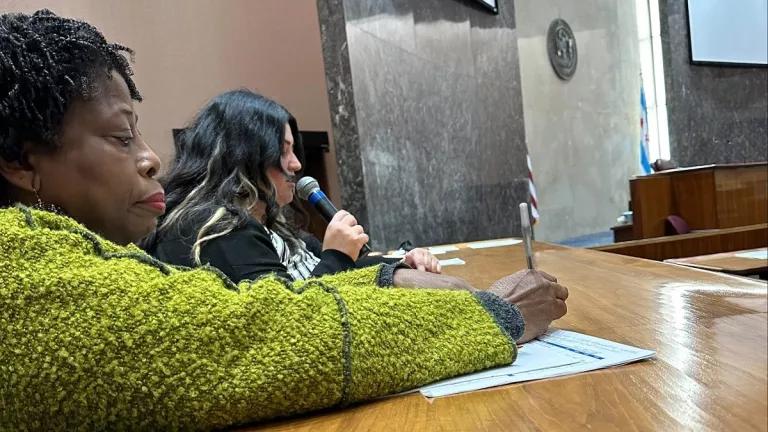Chicago River Re-reversal Debate: Getting Infrastructure Ready for the Rigors of Climate Change
Last week, there was much attention focused on the impact that continued reductions in Lake Michigan’s already historic low water levels might have on the Chicago River if the mighty drought gripping the region were to continue. Namely, a further six-inch drop in the Lake would necessitate the closure of the locks separating the Lake from the River, to prevent the River from re-reversing course and flow into the Great Lakes. After all, water flows down hill and the striking decrease of Lake levels would undo the engineered hydrology that 100 years ago reversed the Chicago River and made it flow away from the Lakes, carrying waste into the Mississippi River basin. ABC7 Chicago had a good segment on the issue with interesting comments from representatives of both the Army Corps of Engineers and the Metropolitan Water Reclamation District explaining the possibility of this threat.
Whether this unpleasant scenario comes to pass or not---and we should all hope it does not----is not the ultimate point. The significant point is the very fact that the unplanned flow of contaminated water into Lake Michigan is a serious possibility, real enough for the Corps to highlight the threat and announce plans to try to limit the impact of a reverse flow. The real point is that this situation is another mind-blowing signal that we have to rethink how we manage the River and get serious about climate change.
These points are in fact reinforced by a press statement that MWRD put out last week attempting to minimize the problem. Everyone agrees that there is a potential need to close the locks and gates if the Lake continues to shrink as projected, though they do not characterize that as a change in course… Semantics. But their statement does reinforce the need to rethink the River in noting that the waterway has actually re-reversed itself almost annually in response to violent rain storms over the last decade suggesting further reasons why we need to rethink the design of the River (they do not note it, but those re-reversals bring beach closures resulting from the contaminants swept out into the Lake during these unfortunate instances).
Both lowered Lake levels and increased violent storms are predicted hallmarks of climate change---we can see the impacts here and now in Chicagoland, and they require us to think very seriously about how our infrastructure can accommodate the new (ab)normal to protect our water and support our economy. The potential need to slam the locks shut to hold the river back due to drought, in addition to opening them during big storms and releasing all that mess into Lake Michigan, reveals a system under stress and inadequate for our needs.
I do not think we can chalk this up to a couple big rainstorms and a long drought. NRDC just released a report on cataloging the extreme weather experienced in 2012, which notes that 29% of the high temperature records on the books in Illinois were rewritten in the year just passed. In years previous, we’ve seen all manners of violent weather, from rain events that dumped 6 billion gallons on Chicagoland in a few hours to the record drought that is shriveling Lake Michigan and Lake Huron. That is an amazing set of extremes in the last couple of years. And in both cases, the River has shown itself outmatched by the swings (and as David Roberts rightly and thoughtfully notes in a Grist piece outlining a "grand strategy for the US built around sustainability," this is a national issue not unique to Chicago). It has been a century since the River was reversed and changes are occurring that undercut the system and the functions it was designed to provide. It is a man-made system that has man-made solutions. We just need to acknowledge this reality and begin adopting the solutions to protect our City, economy and natural resources.



